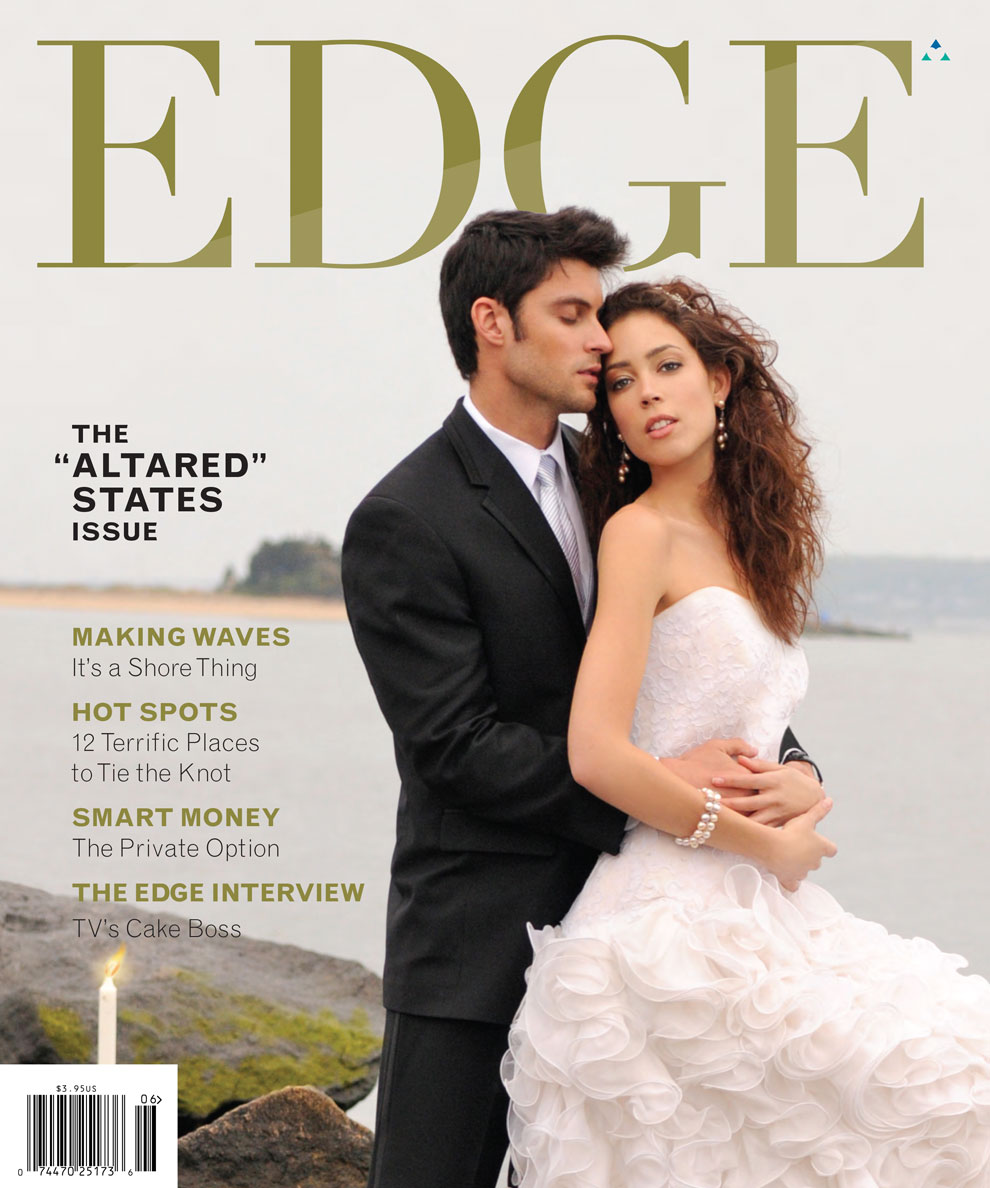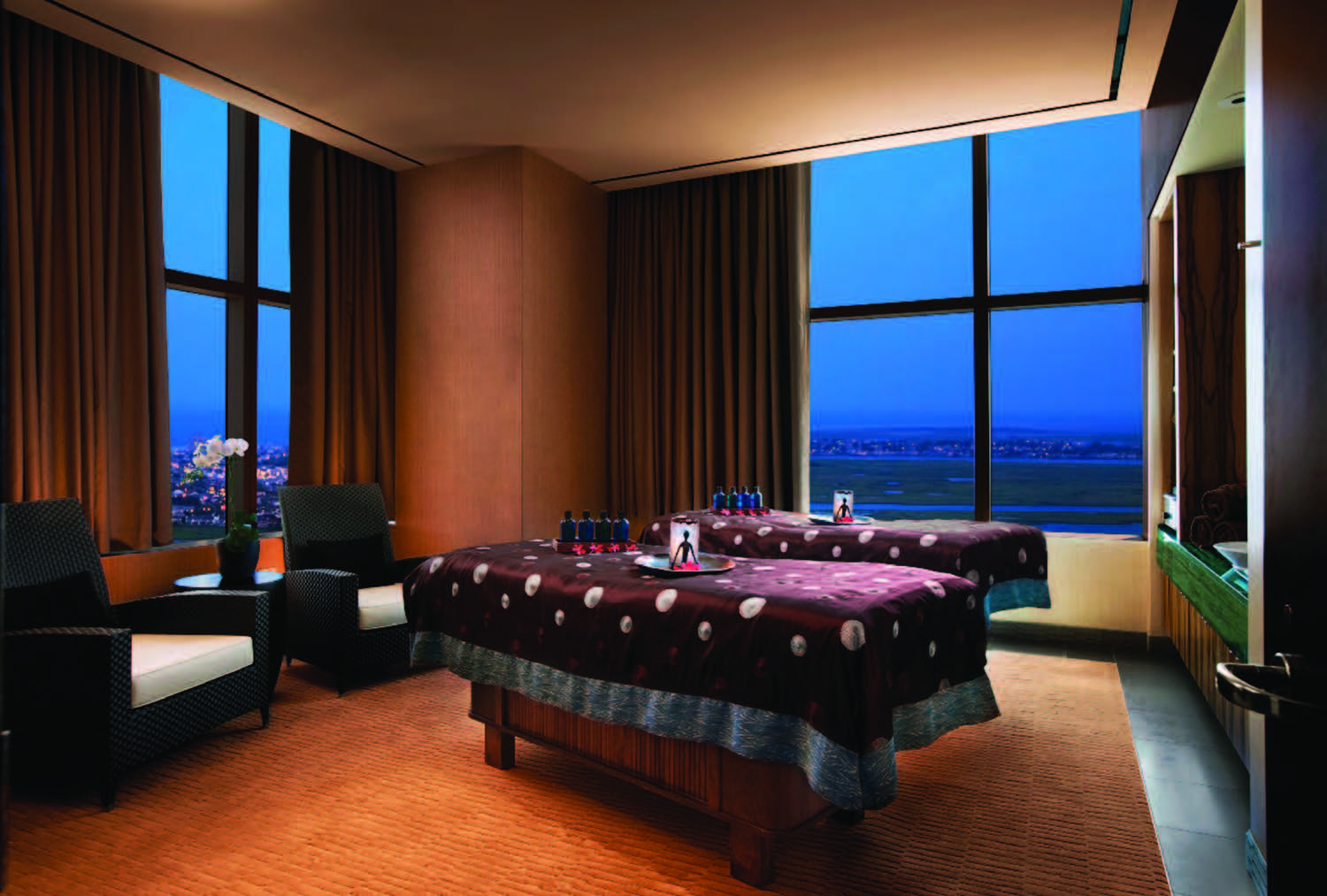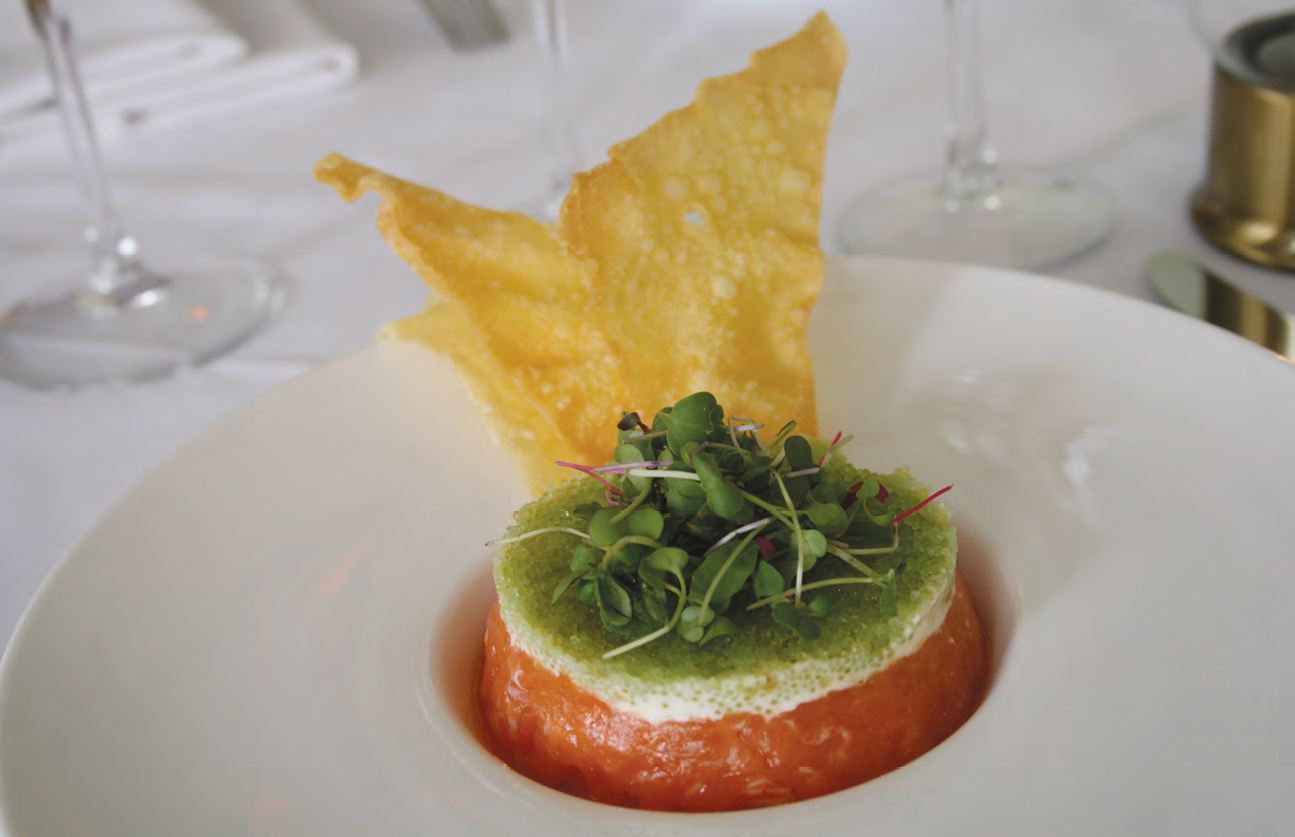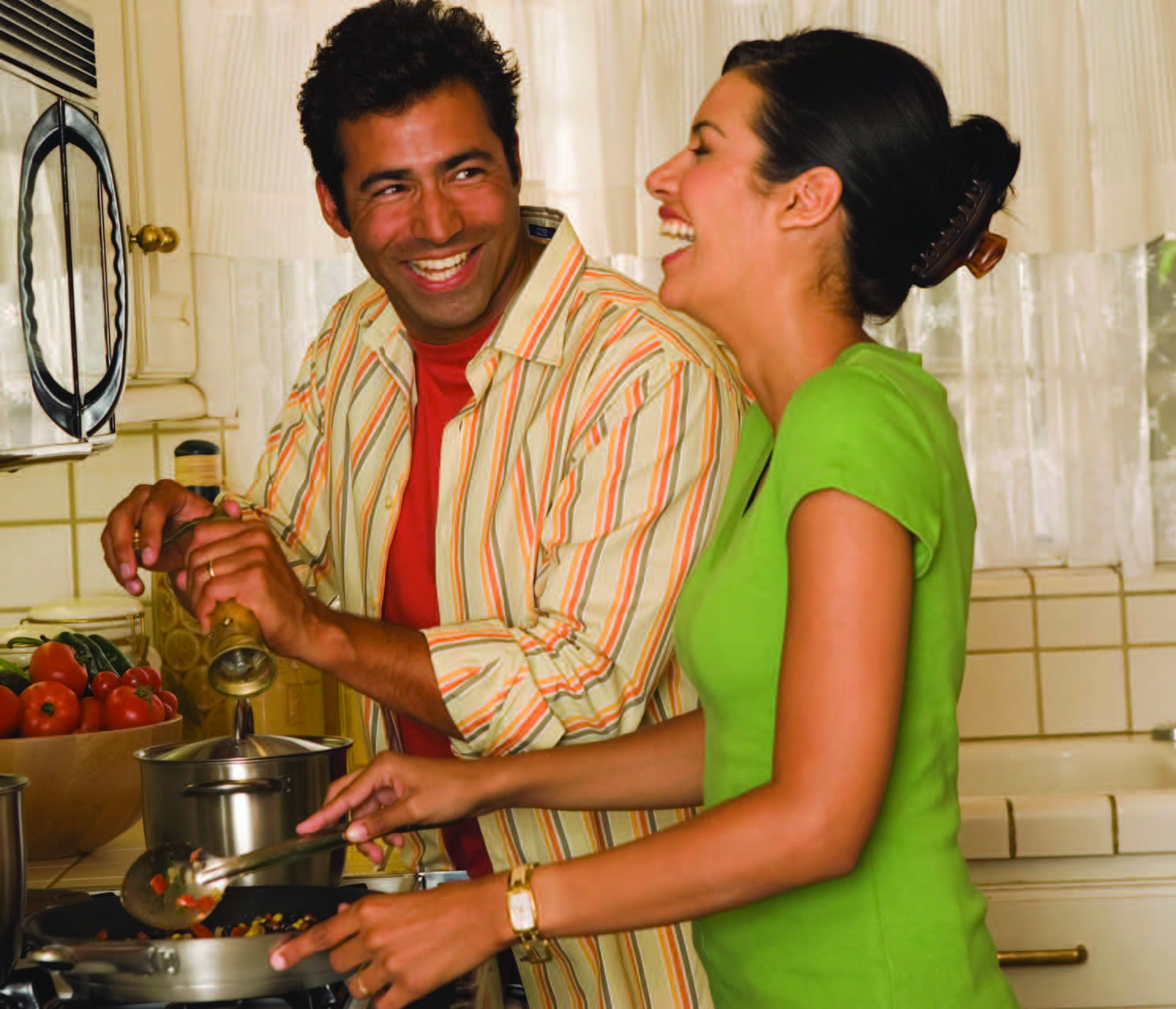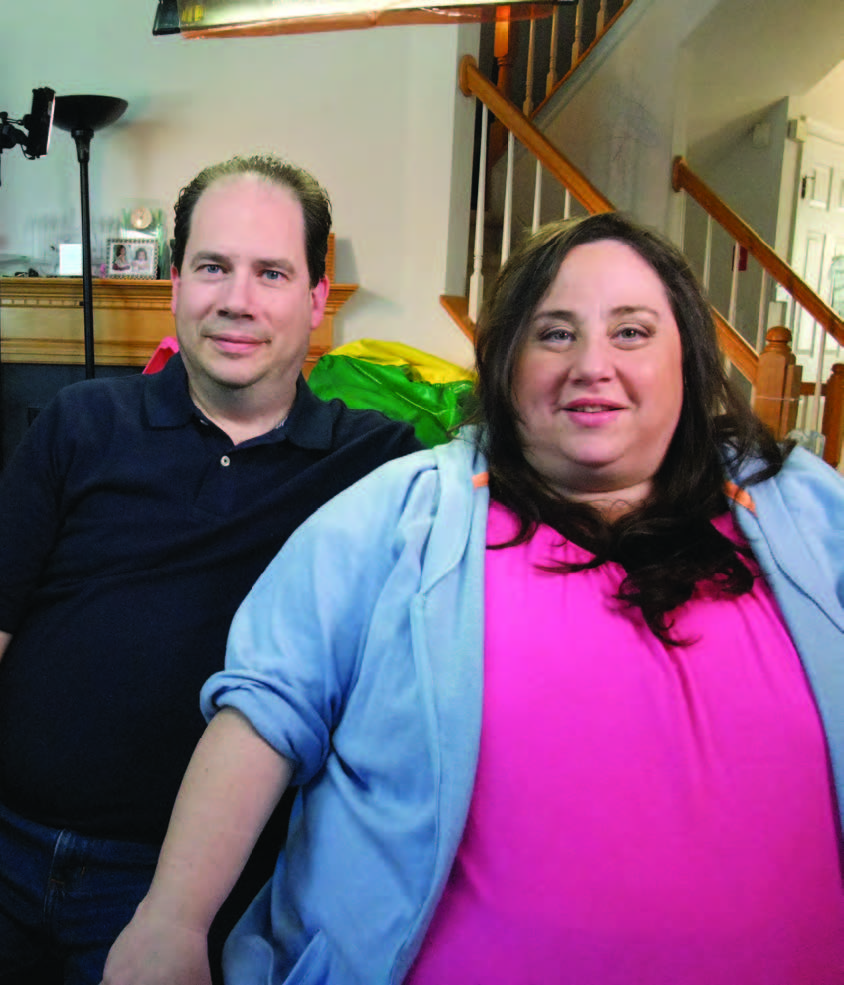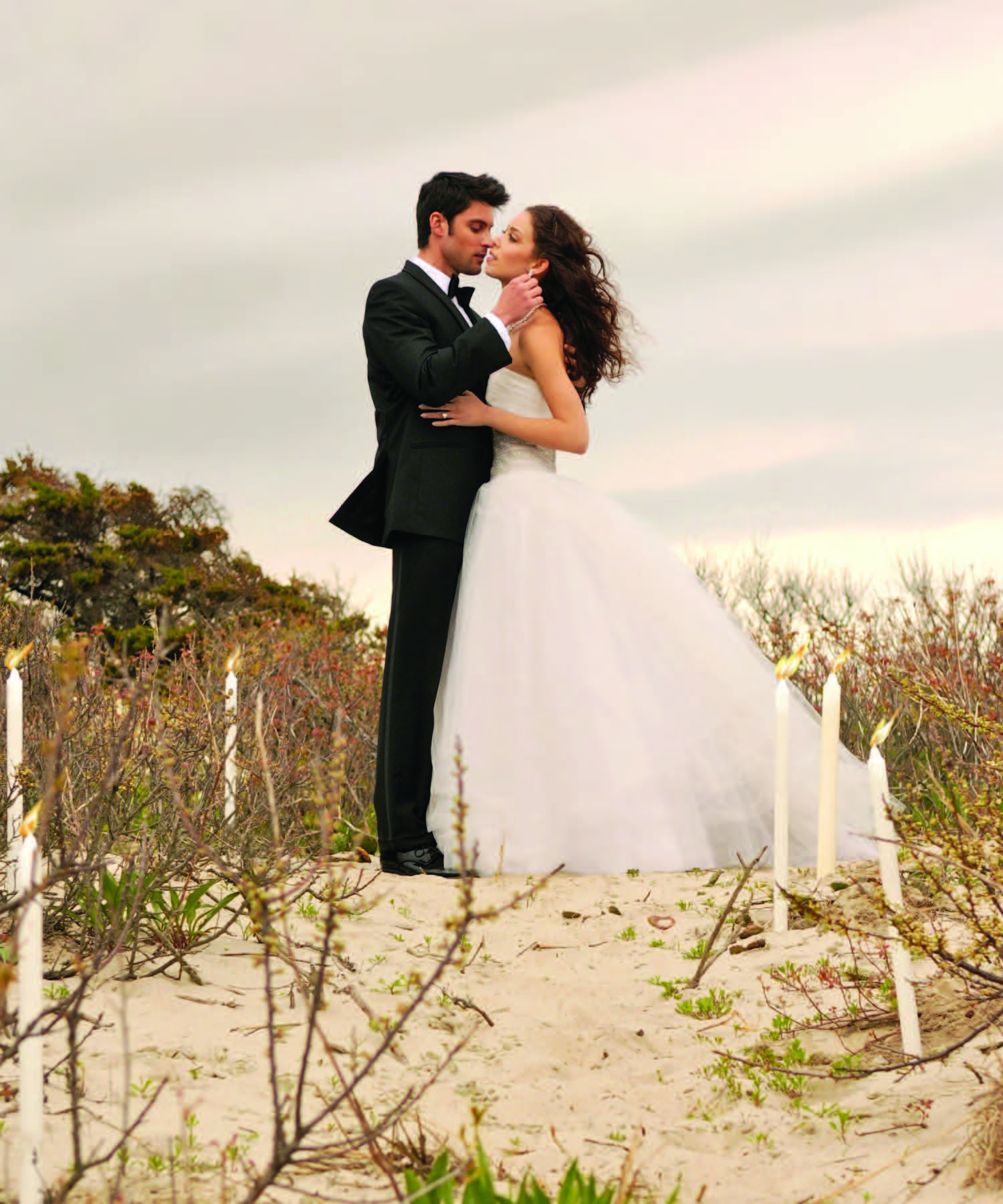Okay, let’s be blunt for a moment. When you think “New Jersey Dream Wedding,” that dream doesn’t really end with a two-hour jaunt down the Garden State Parkway. A week on the West Coast? That’s more like it. Ten days in Tokyo? Absolutely. A fortnight in France? Now you’re talking! Alas, the sad fact is that New Jersey couples don’t always have the days to spare for such glittering post-nup adventures. Which is why staying in-state might just be the brightest option of all. It all comes down to picking your spot. Consider if you will that, for thousands of couples from all over the world, Atlantic City is the honeymoon destination.
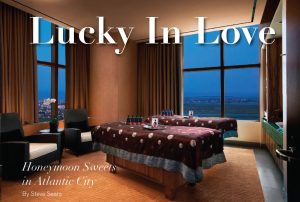
You know that surge of excitement you feel when you hit the AC Expressway? Imagine adding that to the glow of an impending wedding night. “What could be more romantic than a hotel suite with an ocean view, four miles of beautiful beaches and Boardwalk to stroll on, superior dining choices, luxurious spas and great entertainment?” asks Jeff Vasser. Okay, Mr. Vasser gets paid to plug AC. He’s President of the Convention and Visitors Authority. But the man’s got a point. Combine the indulgent pampering available to honeymooners in this town that’s “Always Turned On” with the opulent casino gambling a mere elevator-ride away, and you’ve got the makings of a winning hand. And wouldn’t you know it? Atlantic City’s top hotels are all over this honeymoon thing.
At the Trump Taj Mahal, for instance, newlyweds can choose between Romantic and Risqué. Each includes an ocean view suite in the gorgeous new Chairman Tower, a bottle of bubbly and, depending on which option they have selected, either a Romance or Risqué Intimacy Kit (contents unknown). “We created these packages to offer our guests an experience they won’t soon forget,” says Trump’s Paula Mauk, who confirms that New Je rsey honeymooners can indeed “get away without going far away.”

Honeymooners at the Borgata tend to gravitate toward the Spa Toccare package. It includes his & her Deep Tissue or Healing Stone Massage and Wild Lime Scalp Treatment, then a Classic Manicure and Plush Pedicure for the bride, and a Signature Shave and Express Pedicure for the groom. All those upper case letters come at a price, of course, but why pinch pennies when you can experience the ultimate in marital decompression? Next door at The Water Club—home of the exquisite topfloor, two-story Immersion pool and spa—there is a couples package on the menu that may just outdo them all. Billed as a traditional retreat to luxury, it includes a Javanese Lulur bath and body ritual that transports lovebirds back to a simpler time (like the 17th century). A side-by-side Balinese massage with jasmine frangipani oils is followed up by exfoliation with tumeric, flowers and fresh yogurt before soaking in a fragrant, floral bath, and then finishing up with an application of jasmine frangipani lotion. The bath ritual is performed in a Couples Suite with unbelievable views. Also included are a poolside manicure and pedicure, and the sublime Immersion lunch, courtesy of Chef Geoffrey Zakarian. The Water Club does not offer gaming, however the concourse connecting it to The Borgata’s casino features a gauntlet of high-end retail establishments where couples can blow their wedding checks long before they reach the tables. For newlyweds looking to hang onto their dough a bit longer, there is The Chelsea, a gambling-free boutique hotel unaffiliated with its neighbors, the Hilton and Tropicana.

There are several packages popular with honeymooners checking into The Chelsea. The details and differences are all explained on the hotel’s web site, but the real story here is the wedding bed and the amazing rooms in the Luxe Tower. Think Egyptian cotton sheets, fluffy white duvet, and an endless supply of pillows. Think awe-inspiring views from a deck and sunroom featuring floor-to-ceiling windows. And while you’re at it, think about shelling out a couple of extra bills for one of the penthouse suites (it’s worth every penny). Finally, all of the Luxe Tower rooms at The Chelsea come with lots of whimsical touches to remind guests how very far away they are from the rest of us poor devils…even though they haven’t left the state.
Don’t be misled by the racy cover slugs on your favorite supermarket magazines.
Solving tricky “bedroom problems” is not the exclusive domain of sex columnists.
For countless millions of troubled couples, the answer isn’t the art of love, but the art of placement.
AHong Kong-based movie director sought to smooth his turbulent marriage by trading in his traditional king-sized bed for one with rounded corners. All in the spirit of taking the edge off the relationship. In California, parents of four daughters in their twenties painted each of their bedrooms peach, a color the Chinese associate with romance and flirtation. To ensure future wedding bells. Having trouble in your marriage? Still looking for that special someone with whom to share your life? Do you sleep like a baby—a colicky one? Are you restless when you should be resting, waking up in the morning jumpy and nervous? Do you suffer from constant headaches or stomach cramps? Before contacting your local couples counselor, sleep specialist or gastroenterologist, consider this: your bedroom might be suffering from bad feng shui.
Feng shui, the ancient Chinese art of placement, addresses the environment to achieve peace, harmony and tranquility. In a bedroom, a delicate balance must be struck between serenity and suggestiveness. Calming aspects are desirable and contribute to sweet, langorous slumber, but in a marriage or relationship, desire and intimacy also need to be stoked. We spend one-third of our lives in our bedroom, where we rest, relax and recharge our energies. No wonder that, to the modern feng shui expert, the bedroom is one of the most important areas of your home. Indeed, for thousands of years, the Chinese have believed that where you sleep will influence how you sleep—that the structure and layout of your bedroom can affect your well being. When arranging a bedroom, certain ancient Chinese principles should be employed: the flow of ch’i (which translates as “energy”), the balance of yin and yang, and the wholeness of tao (which translates as the “way of nature”). Common and uncommon sense also are invaluable. In a bedroom, to the Chinese, position is an important consideration—of the bed location, that is. Ideally the bed should be cater-corner to the room’s entrance, with a view of the door so that you can comfortably see anyone entering and not be surprised. This position is called the commanding position; it gives you a sense of control over your environment. A poorly placed bed may disrupt your sleep at night and make you edgy and unbalanced during the day. Given that the ideal bed-to-door relationship is not always possible, the best cure is to hang a mirror in a way that reflects the door toward you as you lie in bed. In some cases, a bed lies between two opposing windows, so a draft blows continually, disturbing sleep. This can be cured by hanging wind chimes, a crystal, or light between the windows, thus symbolically disbursing the draft.

“Whether you’re looking for a little luck or just hoping
to get lucky, a little feng shui can go a long way.”
Avoid locating your bed under a load-bearing beam. If it runs down the center, it will be divisive to a married couple. One couple in Manhattan rarely slept together an entire night. The wife always got up in the middle of the night and slept in the guest bedroom. Her midnight rambling ended after they moved the bed out from underneath the beam.
Similarly, avoid having a beam running over your stomach or you may experience cramps and intestinal problems. A newer aspect to modern feng shui deals with all the senses—including lighting and tactile elements—in creating a romantic environment. While a good, bright light is fine for reading in bed, a softer light or pleasantly scented candle will enhance the romantic mood. Deep, slow music is also conducive to intimacy. In addition, silky, velvety fabrics create comfort and help fan the flames of love. Carpets that feel good under foot are preferable to hard sisals or cold wood floors.

Color also is important in a bedroom. While you should always select the colors you love, it’s worth noting that pink is best for romance. Light green and pale blue are also good, as they symbolize hope and development. And peach may be the way to go if you’re still in search of that special someone. Finally, it’s worth mentioning the importance of purging your bedroom of any keepsakes or reminders of failed relationships. Keep it positive. Flowers and happy images are far more effective at creating an atmosphere conducive to a happy connection. Indeed, whether you’re looking for a little luck or just hoping to get lucky, a little feng shui can go a long way.
Editor’s Note: Sarah Rossbach is the author of Feng Shui: The Art of Chinese Placement, which was described by The New York Times as the “bible of the practice.”
“Campos can cook. His superior technical skills are made clear through the fine chop of a tartare and the ethereal texture of a near-weightless crepe.”
Lorena’s defines intimate. You enter, through a slip of a passageway, a dining room that seats but 32. Tables are small, space between them is at a premium, but there’s never a feeling of claustrophobia. No, instead a wall of windows swathed in dark sage fabric expands the diminutive space. Large, brightly colored paintings bring joy and festivity to the scene. Not that Lorena’s needs any help infusing happiness into the world. It’s a love story, an ode from chef Humberto Campos, Jr. to Lorena Perez, the woman who inspired the restaurant that has, in spite of its size, anchored a particularly chic stretch of downtown Maplewood for almost five years. The romance of this husband-wife team plays out every night dinner is served, with Lorena gracefully orchestrating the doings of the dining room, while Humberto works a kitchen fitted with fewer accoutrements than offered in most suburban McMansions. This is one of those fairy-tale ending restaurants: Boy meets girl, boy and girl share a dream, boy and girl make the dreams of couples looking to celebrate special nights come true as a matter of course. You’d spend your dinner here sighing under the spell of this story if the food didn’t interrupt your revelry.
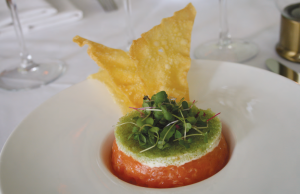
And the food is pure pleasure. Campos can cook. His superior technical skills are made clear through the fine chop of a tartare and the ethereal texture of a near-weightless crepe. His ability to let an ingredient strut its stuff is evident in the perfectly cooked simplicity of a piece of cod set against a backdrop of humble lentils. His quiet confidence is on display in an elegant cup of divine, unadorned ice cream. Fuss happens in the selection of those ingredients, in the focus on prep, in the concentration it takes to turn from pan to plate an exquisite composition that never befuddles the diner. All the while Lorena Perez is quietly orbiting the dining room—directing a floor crew that misses not a dropped napkin, a dirtied knife or a subtle cue from a table ready to move on to the next course—Campos is mirroring his wife’s front-of-the-house grace in his compact kitchen. The French-influenced, modern American fare quickly becomes the topic of conversation at the tables. The briskness of sake and the punch of wasabi are almost elusive in a starter of raw Scottish salmon chopped as fine as an infant’s fingernail, then punctuated by pops of tobiko and served with a wisp of crème fraiche and a crisp, fried wonton.
The Far East gets a visit from the Continent, and they reach an accord. Campos gives a similar twist to homemade cavatelli, tossing the pasta with shreds of duck so tender, so inherently rich, that it mimics confit, then adds the crunch of blanched snow peas to the mix along with a sprinkling of sharp sheep’s milk cheese. That crepe may look weak-kneed, but it’s got the strength to hold ample jumbo-lump crab—shellfish so sweet that you understand immediately why the chef sought balance with earthy wild mushrooms. Given a swirl of puréed herbs, the first-course dish charms. The cod made me jealous. Sure, Campos secured an extra thick center cut of the fish. He has at his disposal an amped-up, professional stove that rocks at higher temperatures than mine. He probably doesn’t hold back when doling out butter, either. I’d cooked cod at my home the night before and Campos’s version made me want to enter culinary school at the nursery level. Remedial class. This cod, with its barely cooked interior and lightly seared edges, found soulmates in French lentils, pert and forest green, and an all-luxe parsnip purée. It was a plate composed of nothing but accomplished elements.
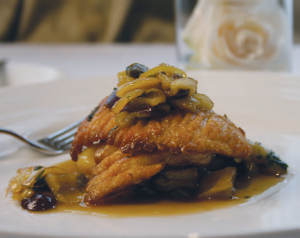
Wild-caught Arctic char kept pace. A lot like salmon, a little like trout, char isn’t often seen wild in these parts. Campos treats the rare find right, partnering it with wild rice, zesty and bold pickled red onion, then adds dried fruits as a backdrop. Though it may not remain on the menu as Lorena’s shifts through spring into foods more suitable for warmer weather, the short ribs are a classic to revisit as soon as the temperatures again suit. Resolutely beefy and tender, they’re riddled with caramelized onion, sided by an uber-buttery purée of potatoes and given a shot in the arm by riffs of Roquefort, a potent cheese that actually tamps down the richness of the dish. My friends sniffed when I ordered the bread pudding for dessert. Such a sophisticated, polished restaurant. So much romance in the air. Why go boarding school at a time like this? Because, they soon learned, Campos starts with eggy-yet-airy brioche, moistens it with banana, gives it the kick of peanut butter (of all things), then finishes the very grand finale with maple-licked caramel sauce and vanilla ice cream. There’ll be competition over this one. As well as for the precise warm chocolate cake, a compact disc that wasn’t a smidgen too sweet and took a serious likin g to an accompanying swirl of raspberry purée. I took a liking to the homemade ice creams, and appreciated the sheer correctness of the chocolate ice cream and the intense citrus flavor in the orange sorbet. You don’t need to hit a diner over the head with frills and frou-frou to impress.
Which sums up Lorena’s, where the food and the scene are all heart.
Keeping a marriage on track takes hard work and an open mind. The obstacles are unrelenting. The rewards sometimes seem few and far between. Money, job stress, child rearing and personal growth (or lack thereof) are among the big-picture challenges. Just as vexing are all the little conflicts that must be resolved merely to stay focused on moving the relationship forward. Then one day you wake up, look at your mate and wonder, “Do I really know this person?” Or worse, “Do I really know myself?” The good news is that successful couples find a way to muddle through and come out stronger on the other side. As a rule, they learn to divide their stress load as time and circumstances dictate. However, they make sure to deal with the “big stuff” as a team. This strategy is vitally important when facing the health issues that crop up as couples age. Almost every family will have to deal with a major illness at some point. How couples get through it can depend as much on their teamwork as it does on their doctors. That is why the medical field is placing increasing emphasis on providing the highest quality information and support to patient and spouse long before the physical healing process even begins.

“Patients’ emotional stability is as important as their physical well being, which is why—if and when possible—they should embark on this journey with their significant other,” says Alan P. Krieger, MD, whose patients include men undergoing prostate cancer treatment. “Couples should absolutely go through the initial steps together. Both need to understand what’s going to happen, and that works best when the doctor is able to meet both patient and partner.” Indeed, where once spouses were spared the unpleasant details of a surgical procedure—and as a result were unprepared to deal with the aftermath—now full disclosure is a crucial part of recovery.
That begins with understanding the options. For instance, most people understand that hysterectomies are performed for several reasons (ranging from unusual conditions such as ovarian carcinoma to something relatively common, such as irregular bleeding or pelvic pain). Yet they have no idea how many ways this procedure can be performed. At Trinitas Regional Medical Center, many operations—including prostate surgery and hysterectomies—are now done with the da Vinci robotic surgical system. “Good vision and maneuverability translates into more precision and a faster recovery for the patient,” says Kamran Khazaei, MD, FACOG. “The da Vinci lets surgeons see in high-definition. And by using the robotic arms with both hands, we are able to perform very delicate procedures. In many cases where patients used to need four or five days to recover, they are walking and eating the next day. In the more aggressive surgeries, recovery has been reduced from weeks to days.”
Not all cases can be addressed robotically, Khazaei cautions, ovarian cancer being one example. Likewise, not all options involve surgery. “You have to cater to each patient individually,” he says. “With medications. Injections. Therapy. As physicians, our job is to treat our patients in the least invasive way possible.” “In issues related to menopause,” he adds, “we are sensitive to the fact that women experience it, but also that men deal with it. We look for ways to keep both parties sane.” Sanity also comes into play with another medical issue that has become increasingly common among couples: Obesity. The patients treated by Joao A. Lopes, MD, and Muhammad S. Feteiha, MD, FACS, often are at the end of their rope. After years of yo-yo dieting and deteriorating health, they want to discuss a surgical option, either a gastric bypass or a gastric band. Lopes can quote the statistics on both procedures chapter and verse. Bypass patients achieve around 80 percent of the weight they anticipated losing, while band patients drop about 40 percent. That easily outweighs the option of doing nothing.

Those who fail to address their obesity in a substantial way (through diet, exercise, surgery or a combination of the three) are 300 times more likely to die 15 years earlier than people who keep their weight under control. The number that impresses Lopes most, however, is that more than 70 percent of the patients he sees come in as couples. “Success depends greatly on the understanding and support of partners and spouses,” he says. “It helps tremendously to have someone encouraging your new lifestyle, exercising with you and taking part in the process. A husband or wife must take part in their new eating behavior and move toward healthier types of foods.” As with most medical procedures, sorting through the options as a couple is the first step in a successful outcome. In the case of a band or bypass, knowing what has to happen afterwards is just as crucial. “Bariatric surgery patients really have to understand the new diet and what they’re getting into in terms of the process after surgery,” says Lopes. “The support of a spouse is tremendous, and we have a bariatric coordinator here in the office to help. Basically, we get through it together.” To help support his recovering patients, Dr. Krieger actually started the first New Jersey chapter of Us TOO, which counsels prostate cancer survivors and their partners. “My main goal is to cure the cancer,” he says, “but a key part of the recovery is for couples to know how they can work together to improve their lives and their relationship.”
Editor’s Note: Rachel Rutledge is EDGE’s ace Editorial Assistant. Lisa Milbrand, who usually writes our Healthy Edge feature, conducted the interviews for this story.
New Jerseyans will argue endlessly about who prepares the finest seafood, grills the best veal chop, rolls the best sushi and spins the best pizza. One of the few things we can agree on is who makes the best wedding cakes—not just in the Garden State, but possibly in the world. BUDDY VALASTRO is the Cake Boss.
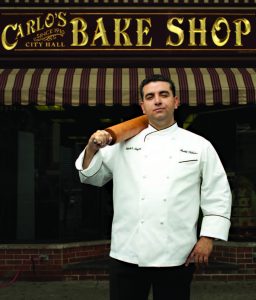
The Hoboken maestro has transformed Carlo’s Bakery from a neighborhood treasure into an international institution with a little help from cable network TLC. With two seasons under its belt, Cake Boss claims millions of viewers and is one of the most popular shows in the TLC lineup. EDGE caught up with Buddy in Los Angeles, where he was filming summer promos for the network. It’s a rare day when he’s not running the show at Carlo’s. He’s been the boss since he followed in his father’s footsteps at the age of 17.
EDGE: What is the secret to creating a great wedding cake?
BV: My success has always come from listening to the bride, to the mom, or whoever has input on the cake. I ask a lot of questions. What’s the season? What’s the theme? What’s on the menu? What type of flowers? What do the invitations look like? Can I see the wedding dress? Once I see all that, I can make decisions about the direction I want to go in. Of course, it’s got to be delicious and it’s got to be something out of the ordinary. I always have to come up with new things.
EDGE: Is it mom or daughter that does the deciding?
BV: Either the mom is in charge of the whole thing, or the daughter will say, “Shut up, it’s my wedding and we’re doing it my way.” It’s about fifty-fifty.
EDGE: What percentage of your clients come to you with a clear idea of what they want, as opposed to your having to nudge them in one direction or another?
BV: I would say sixty-five percent you’ve got to nudge. Thirty-five percent know.
EDGE: Should brides-to-be come armed with pictures of what they want?
BV: It helps to do your homework. Look through bridal magazines and surf the Internet for ideas. You might pick out a cake that only needs to have a couple of things changed on it. As a rule, the more input you give your baker, the easier it is to get a great cake. Also, do your homework on the baker. Check out their track record. Ask how they are going to deliver the cake. Do they have a refrigerated truck, or are they gonna throw it in the back of a Toyota?
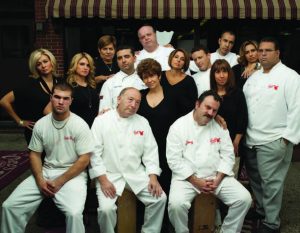
EDGE: How much physics and engineering is involved in building a multi-tiered cake? Is there a height above which you can’t go?
BV: If it’s a tiered cake, no. Gravity comes into play when there is an elaborate sculpture. Sometimes that can be problematic. But a regular tiered cake is no problem. For the boarding in between we use a special type of Masonite instead of cardboard. We use plastic tubes between the tiers. Years ago, I decided I just didn’t want to “fix” cakes anymore. I devised a system, and now, structurally, my cakes are second to none. I’d rather spend a little extra money and a little extra time to know they’re going to get through the wedding okay.
EDGE: Is there a wedding cake the Cake Boss won’t do?
BV: I try not to back down from a challenge, so we don’t say no too often. However, sometimes you get a client and you know they’re going to be really difficult. Some people you aren’t going to make happy no matter what you do, so you have to be big enough to understand and accept that. In those cases, I’m likely to say I don’t have the availability to do the cake.
EDGE: Okay, is there a wedding cake you can’t do—one that’s physically impossible?
BV: Not for the Cake Boss. You say it can’t be done? Hey, that’s what we do.
EDGE: I’m picturing a cake in the shape of the bride and groom—sort of like the topper on a cake becomes the cake itself.
BV: We’ve done a lot of modeling on wedding cakes, but never anything like that. But hey, if you pay, I’ll play!
EDGE: When you start a cake, do you know exactly how it’s going to turn out?
BV: Yes. I can close my eyes and picture what it’s going to look like. Very few times does that vision fail. That comes with experience. I’ve been doing this a long time. I’ve done thousands and thousands of wedding cakes. In the beginning, when I was learning, I’d experiment with different techniques. I might have to redo the same cake ten times. Eventually, I learned how to get a cake exactly how I wanted it the first time.
EDGE: Every time a Cake Boss episode airs, thousands of people say I could do that or I want to do that. How long before someone can turn out a decent wedding cake? What’s involved in working your way up the top?
BV: I’ll tell you the truth. I’ve done it my whole life; I can do it blindfolded. That makes me a bad example, because when I do it, it looks easy. It takes at least a couple of years of doing fifty wedding cakes a week to where you feel you can do anything. To get to the caliber of cakes that I make, you’re talking five to ten years. And we do anywhere from sixty to eighty wedding cakes a week.

EDGE: Does that guarantee they’ll be great wedding cake makers?
BV: To be honest, there are people who are artistic and, conceptually, they can do it. They could take a cake that’s iced and stacked and do beautiful things with it. But they don’t know how to ice and stack it. You have to be able to do the whole thing.
EDGE: And baking’s hardly a “feel” profession.
BV: No, it’s not. Baking is a science. It’s a science.
EDGE: Is it a challenge being a Hoboken institution and a national television personality?
BV: I’ve never forgotten who I am or where I came from. I feel bad for my local patrons who can’t get in the bakery as easily now. So I’m working on that. And I feel bad for my fans, who can’t get my cakes because I work in New Jersey. I’m working on that too.
Dispatches from the Dating Front
The facts are irrefutable. The numbers are alarming. The statistics are startling, surprising, and just a little depressing. By now you realize that I am not referring to the unemployment rate, the housing market, or the New Jersey Nets’ 2009–10 record. No, I am talking about dating. And specifically, dating post-30-something when, as the old saying goes, you’re more likely to be kidnapped by terrorists than find Mr. Right. Dating takes guts, and it is much easier to exit than to enter. If you don’t believe it, try these three numbers on for size—50, 3, 3 and 5. Around 50 percent of American singles have not been on a real date in more than two years. Human beings typically decide whether someone’s attractive within 3 seconds of meeting them. And the most common time for breakups is between 3 and 5 months into a relationship. Whether you’re newly unattached or, like me, a lifelong single, the odds may seem stacked against you. However, who’s to say you can’t tilt those odds in your favor? To do so, it helps to have a little clarity about what is—and is not—happening out there on the adult dating scene.

THE BASICS
You’ve probably heard these words of wisdom before, but they bear repeating. According to the most recent study I could find, instant dating turn-offs are bad breath, bad teeth and body odor. Followed closely by hair mistakes, raggedy nails, missing teeth, hairy nostrils, burping, flatulence, and goofy glasses. This goes for the guys and the girls—no joke! If you manage to make it past those harrowing first three seconds, remember not to talk too much about yourself or your ex, don’t bring up marriage too soon, and don’t appear to be an overeager beaver. Body language speaks volumes, so uncross your arms.
Look your date in the eyes, and gaze and hold that look a little bit longer than normal. Create an instant link to a person, and say his or her name at least twice during a conversation. Look for clues that your date is interested, and remember bits of information about a person and work that information back into the conversation. Happiness is contagious and hard to walk away from. So try to relax. Don’t worry. Be happy. In terms of gender specifics, remember that a large majority of men are not confident meeting a woman for the first time. As a rule, men are put off by groups of loud women. So ladies, help these poor guys out and break away from the crowd. And please, help with the conversation. At the same time, avoid clinging, fishing for compliments, serial flirting, being a party girl or a drama queen. Men, stand up straight before you even utter a word—slouching gives a woman a negative first impression. Also, if you cannot decide what to wear on a date, go with blue. Studies confirm women are attracted to men in blue.
LOCATION, LOCATION, LOCATION
We all know how important it is to be in the right place at the right time. Indeed, among the best places to meet other people and do some initial flirting are classes, coffee shops, gyms and shopping malls. And despite what you’ve heard, office romances have a surprisingly good track record, too. Four out of 10 result in marriage. Don’t ask about the other six. No longer taboo, no longer not talked-about, and no longer not admitted to is online dating. In fact, the online dating industry rakes in close to $2 billion dollars annually. Matchmakers and dating coaches pull in another $260 million. Goes to show you, there are a lot of people looking for Mr. or Ms. Right. Right on. The drawback of going cyber, of course, is that what you see isn’t always what you get. Statistically speaking, a woman’s biggest fear in the online dating world is meeting a serial killer. For men it is meeting someone fat. To the men I say hey, prioritize! To the women I say that only three percent of men are technically psychopaths, so the odds are with you until about the 33rd online date. Italian restaurants are the most popular on a first date. Hello—who doesn’t like pasta and pizza? Most people will kiss on the second date and consider themselves in a relationship after six to eight dates. Women feel it is appropriate to get intimate after a month, or two or three. Men feel it is okay on the third date, which also happens to be the recommended time to wait until cooking someone dinner at home. Interesting.
WAR STORIES
What do the boots-on-the-ground people have to say about New Jersey’s 30-to-50 dating scene? I convinced five friends to recount some recent experiences. Admittedly, it’s too small a sample to be scientific. But I think it’s a fairly accurate picture of who’s out there and how they’re doing.
LINDA
She doesn’t need a reason to celebrate, but a good date is cause for celebration. Linda likes to go out and have fun, and dating is a night out. The way she sees it, a night out—good or bad—is never that bad. “I go out every weekend with this frame of mind,” she says. “I am out to have fun and if I meet someone, great. If not, I am still going to have fun.” Linda has rolled the dice on the Internet dating site, Match.com. “I had what I thought were two great first dates, but both turned out to be total busts. All they were looking for was a physical relationship—on the first date. One guy lived in a boarding house in Belmar and ranted on and on about how much he hated his family. I thought about calling 911.”
DAVE
He’s 39 years young and the most fun guy I know. Dave has sworn off blind dates—they just don’t work, he says. Dave meets many of his dates in bars, where he can make the corniest opening lines sound like Shakespeare sonnets. He also finds Facebook to be productive. First dates are usually dinner, and Dave always pays. “I have found some old flames on Facebook and a lot of new ones, too,” he says. “I also meet a lot of people at weddings, but the younger women kind of get misty-eyed watching the bride. I smell commitment and usually run.”
HANNAH
She was married, a mother, and divorced before turning 30. The years leading up to and after Hannah’s divorce were trying, both emotionally and physically, and when she decided to get back into the dating game it wasn’t as simple as she thought. After many miserable and insufferable dates (almost all the results of set-ups), she tried Match.com and had substantially better luck than Linda. “I knew right away Victor was the one,” she says, sounding almost like a commercial. “We clicked. Our first date was coffee. We saw each other often after our first date, and very soon after we became inseparable.” Hannah and Victor, both in their 40s now, just celebrated their seventh wedding anniversary.
ROB
He’s what Jersey Girls call an Italian Stallion. Rob is a player—funny, smart, athletic, handsome, curious and, with some notable exceptions, fairly adept at juggling multiple dates. Suffice it to say that a glass of wine tossed in the face, a lap full of spaghetti, and getting his sports car keyed are not rare occurrences for Rob. Still, he lives and dates by a strict code. “I never let anyone I date see, hear, or know about others,” he says. “I don’t flaunt it and I am sensitive about it. Humor, discretion and comfort are very important.”

DANIELLE
She has to be the hardest working person I know, and she admits that dating isn’t easy. At 41, Danielle wonders if she will ever marry. Actually, she wonders if she will even date. “Believe me, I have tried. I am going on a singles cruise in a few months, and although I am not looking, it doesn’t mean I won’t look.”
Dating isn’t meant to be, nor should it be, a military campaign. I remember most of my dates, and yes, there are some I would love to forget. Like the time my date and I shared a dinner table with his friend and his friend’s girlfriend one Labor Day weekend. This couple argued throughout the entire meal. Finally, my date asked them to calm down. The other woman threw a drink in his face, he got angry, and then his friend punched him in the face and broke his nose. We spent the evening in the emergency room. I guess, in this case, love really was a battlefield. Most of my dates haven’t been catastrophes. My best, my favorite, and the date I still remember with longing and nostalgia, consisted of a long bike ride around the park, a messy soft-serve vanilla cone, a dinner of pizza and Pepsi, and watching a sky full of fireworks. Sparks flew that night. They certainly did.
Editor’s Note: In researching this story, Diane explored the worlds of dating “events.” Log onto edgemagonline.com to read an extended version of Love Is a Battlefield and get her take on Lock N Key and 7 in Heaven.
A day together in the kitchen can be great couples therapy. Or a recipe for disaster.
Couples searching for something to do together frequently settle for spen ding a few hours at a nice restaurant. By definition, this serves the purpose—they’re doing something and they’re together. So why, after they pay the bill and argue about whether the tip was adequate (and was that last Sambuca really necessary?), does the sense of isolation remain? Because
ding a few hours at a nice restaurant. By definition, this serves the purpose—they’re doing something and they’re together. So why, after they pay the bill and argue about whether the tip was adequate (and was that last Sambuca really necessary?), does the sense of isolation remain? Because
they haven’t really “done” anything; the experience was essentially passive. Now, if they were to cook the dinner together, they might enjoy being creative and productive, working toward a common, pleasurable goal. Assuming, of course, that no one gets sick afterward. First, let’s establish some ground rules. These evolve from my thirty years of marriage (no reprieve in sight) and almost that many years as a professional chef.
They don’t apply when one of the partners has serious cooking experience and the other doesn’t. Habits developed in restaurant kitchens die hard, and never remembering to turn off the burners can be a problem. Unless you both think liverwurst on rye with onions constitutes dinner, you should begin planning your menu at least a week ahead. Write it all down. No unilateral last minute changes. (“Uh, I thought we could throw a couple of habaneros in the stuffing.”) Start a notebook. Keep track of your meals à deux. If you’re really into it, take some pictures. Don’t keep insisting on foods that make him break out in hives. He may be a Neanderthal, but he’ll get the message eventually. Settle on how, as well as what, you want to make. “What? My mother always put cream of mushroom soup in the sauce. I suppose that’s not good enough for you?”
Avoid including Mom’s, or Nonna Esmeralda’s or Tanta Rifka’s specialties. Avoid tricky, last-minute preparations. No hollandaise, no soufflés, no deep-frying, no molten chocolate cakes. Pick a make-ahead first course. A salad or a soup would be perfect, and believe me, if you think making a great soup is too easy, you’ve never made one. Put together a platter of antipasto, and remember to take it out of the fridge an hour or two before you eat, so the cheese doesn’t taste like polystyrene.

For a main course, roast a leg of lamb, or do a baked pasta, or a casserole. Forget the veal piccata for now. And if neither of you can wield a carving knife properly, cook something that doesn’t require a surgeon’s touch. Watching him wrestle with a roast chicken, or, worse, a roast duck, will lead to merriment (yours) and resentment (his). If neither of you can bake…don’t bake. Baking is unforgiving. Many professional chefs dislike the weighing and measuring and fussing. Learn a foolproof recipe for tiramisu or a fruit cobbler and make it the day before. This isn’t a cooking show, and you don’t get extra points for creativity. Simple and successful is the goal. Just in case, have a couple of pints of ice cream in the freezer. Shop the day before, if possible.
Have some alternatives in mind, just in case all the asparagus is yellowish and limp, or your grocery is out of pancetta. Make sure you have all of the equipment you need. This is a good time to invest in a decent chef’s knife, or an enameled cast-iron casserole, or even a good pair of tongs. Looking for a pastry bag in the local drugstore on a Saturday night is a total bummer. Establish a timeline. Candles and cut flowers are optional, but leave enough time that you can shower and change. If one (or both) of you smells stronger than the cheese, you’re not going to enjoy dinner. Take it easy on the cocktails and keep them simple. A bottle of wine, maybe two, is fine. Three strawberry mojitos before dinner is just wrong. And don’t hurry. No one’s waiting for your table. Enjoy eating what you’ve cooked, and compliment each other’s efforts. Save the competitive juices for the tennis court. Is there one unbreakable rule? Yes, and it may not be an obvious one. Scrub the cookware; empty the dishwasher; wipe down the counters; take out the garbage. Before you eat.
The whole exercise is pointless if you come down for breakfast and there’s a heap of greasy pots in the sink and the house smells like garlic. The concept is to eat dinner and then follow your fancies. Or your fantasies. Ever met anyone whose fantasy life revolves around unclogging the garbage disposal the morning after? Many of us spend our days tapping away on lifeless little plastic squares. A day spent together in the kitchen provides contact with the textures and colors of nature. We get our hands dirty, and maintain the focus needed to work safely with hot pans and sharp knives. With a little forethought, you might have a pleasant afternoon followed by a memorable meal. After all, feeding and being fed by another person is an act of—almost—unrivaled intimacy.
The state’s public schools are coping with shrinking budgets and teacher layoffs. Many parents are asking: ‘So what’s the deal with private schools?’
Say what you will about New Jerseyans. Compared to the average American, we are pretty darn smart. The numbers don’t lie. Our children consistently score at or near the top of the national rankings for math, reading, writing, standardized tests and percentage of high-school grads headed to college. Some have observed that college students represent the state’s number-one export. As a people and as a state, in good times and bad, we spend a ton of money on K-thru-12 education. So how come we’re so clueless when it comes to choosing between public and private schools? Almost every parent agonizes over this choice at one time or another. We weigh every variable, examine each statistic, poll our friends, and attempt to reconcile this information with our family and cultural values. Then figure out what we can and cannot afford. These are not simple calculations. Ultimately, we go with our gut…and hope we’ve made the right decision. Statistically, the case for public education in New Jersey is a strong one (see sidebar). In addition, the state’s public schools hold the promise of a more realistic and representative preview of life, bringing together young people from different cultural and economic backgrounds, with a wide range of academic capabilities and learning skills. Public schools also tend to have more competitive sports programs and, in the case of New Jersey’s magnet schools, focused educational tracts for high-achieving
students—from Engineering to Communications to Marine Sciences. Intellectually, we know that private schools tend to offer a number of advantages, including spiffier amenities and traditions of high achievement. Most of these are linked to the fact that private schools do not receive tax dollars, and thus are free from the vagaries of state policy-makers and budget woes, like the one we’re in right now. Private schools are free, so to speak, to do as they please—or, more to the point, to do as parents please.

A SENSE OF COMMUNITY
What bang do private-school parents expect for their tuition buck? For many families, the decision is all about college; the sooner they “mainstream” their kids, the better the university they are likely to attend. For others, the pull of going private is the extra attention that they believe will be (and typically is) lavished upon their offspring. And, of course, for some families, a driving force behind writing that big tuition check is the belief that it will open up all kinds of new social opportunities. Elizabeth O’Mara, Director of Strategic Marketing & Communications at Far Hills Country Day School, views the social component of a private school experience through a different prism. It is an outgrowth of what she considers to be one of the key advantages of going private: an understanding of the partnership between school and home. “The school becomes the neighborhood for many of our families,” O’Mara says. “We have a community where parents are encouraged to get involved in the classroom and out. We think of our parents as partners. We value inclusion, and we ask parents and faculty to model that for our students.” Chad Small, Headmaster of Rumson Country Day School, has worked as a teacher and administrator in both sectors. He points out an inherent strength in this sense of community. “Families have chosen us and want to work with us,” explains Small. “If they don’t like us, or we don’t like them, it’s ‘See you later.’ That enables us to develop a core
sense of values we can pursue, in our case Kind, Honest, Respectful and Responsible.”
IT’S ACADEMIC
For those able to wangle the added cost of a private education, the benefits to the family as a whole are secondary to the advantages awaiting the individual student. That being said, the job of private schools is not to spin straw into gold. Rather, it is to maximize a child’s academic opportunities and challenges. To the naked eye, the greatest difference between private and
public education in New Jersey is class size. In this case, looks definitely are not deceiving. Every administrator contacted for this story ranked the smaller class sizes in their schools at or near the top of the list when asked about key points of differentiation. Obviously, this translates into more “teacher time” per student. But what does that mean exactly? In most cases, it gives schools the flexibility to recognize the different ways kids learn and achieve excellence. For schools that begin in kindergarten, it also translates into a formal plan for social and emotional learning, which is designed to create a stronger academic foundation, as well as opportunities for leadership. The goal is to turn out a child who is self-reliant, flexible and confident both in and out of school. Directly and indirectly, this is actually where a high percentage of tuition dollars go. Because its curriculum is not mandated by any legislative body, a private school can aim as high as it wants in terms of the type and quality of education it offers. It can be more rigorous, offering courses such as Latin and Language Arts to grade-schoolers. It is also free to make course alterations when new research compels it to. Unlike public schools, private schools must continuously strive to improve. If they don’t, they risk going out of business.
NARROWING THE FIELD
Among the many private education choices in New Jersey are myriad schools with some type of religious affiliation, and also single-gender schools. Both have an added element of “mystery” for prospective parents, particularly if they did not attend these types of schools themselves. In terms of size, quality and cost, faith-affiliated schools (for lack of a better catch-all term) run the gamut. Many of these institutions also happen to be single-gender, such as highly regarded Mount Saint Mary in Watchung and Oak Knoll School of the Holy Child, which is located in Summit, both of which are all-girls. Needless to say, the perceived benefit of a religious school is the attention given to a student’s spiritual development. For some families, this is a primary concern when choosing a private school. To others, it’s an afterthought. Timothy Saburn, Head of School at Oak Knoll, sees spiritual development as part of the bigger picture of community. “It’s an important aspect of a successful school today, whether independent, public or otherwise,” he maintains. “Our school culture and program foster a sense of community, which is grounded in our spiritual commitment.” Does that hold true even when a student happens to adhere
to a faith other than the one with which a school is affiliated? Donna Toryak, Admissions Director at Mount Saint Mary
Academy, insists that it does. “The values, code of ethics, discipline and spirituality are universal features that attract
the applicants,” she says. “The faith journey of each student is enriched no matter what the practice of venerating their
own God.” In terms of the gender question, Saburn cites a 2009 UCLA study. It suggests that graduates of girls’ secondary schools have a definite edge over their co-ed peers. “This current research validates, and Oak Knoll proves,” he says, “that
young women in a single-sex learning environment are setting high educational goals, breaking gender barriers, and emerging as leaders. Our young women graduate with a sense of purpose and much promise; they have found their voices and are committed to making their marks in the world.” Finally, at the top of the private-education food chain in New
Jersey are its boarding schools, including world-class institutions such as Peddie, Blair and Lawrenceville. The decision to send one’s child off to boarding school—and how to pick the right one—is an article unto itself. For the purposes of this story, suffice it to say that for families leaning toward boarding school as a high-school option, the Garden State offers some superb options for those who don’t care to schlep to Massachusetts.

STARTING EARLY, FINISHING STRONG
For many families weighing the pros and cons of going private, decision time can come prior to first grade. More than 50,000 children each year are enrolled in private-school pre-K programs in New Jersey. The number of six year olds in private schools drops to around 15,000. From there the enrollment numbers dwindle by a few hundred a year until ninth grade, when there is a jump back up over 15,000. Families sending their public middle schoolers to private day schools and boarding schools account for some of this bump. However, in any given school year, a recent study showed, as many as one in five families is moving a child from public to private, or private to public, so it’s a fluid situation to say the least. What happens after high school? For private-school educators and parents, this is where the rubber meets the road. For the overwhelming majority of kids in private secondary education, college is not just an option. It is the next thing they will do. Will the same kid get into a better college as a private-school senior or a public-school senior? The answer honestly depends on the kid as much as the type of school. However, where private schools offer a clear advantage is in the college advisory and application process. There simply is no comparison. Students enrolled at private schools in almost all cases receive much better preparation for their college years.
According to Toryak, this is a result of several factors. “They are surrounded by classmates with similar values with regard to education and their future,” she points out. “They are success- and goal-oriented, and focus on their current situation as a stepping stone to the college years ahead.” Toryak adds that, because most private high schools have established communications and relationships with colleges, their counselors are better at helping students navigate what has become an increasingly tricky acceptance process. Willard Taylor Jr., Director of Admissions at Newark Academy, believes that private schools are also equipped to determine the “best fit” for students when it comes time to narrowing down their college choices. In terms of the commonly held belief that a top school “automatically” gets kids into a top college, he insists that strong students take care of that themselves. “What an independent school will do,” Taylor says, echoing the thoughts of his peers, “is give a student the opportunity to stand out…to participate and perform at a high level academically, athletically, and in the arts.” EDGE
Editor’s Note: Mark Stewart has two teenage daughters. One opted for public education, the other for private. Both attended a private day school through eighth grade.

Let’s put it right out there: APRIL SEMMEL may be TV’s most unlikely domestic diva. She serves as the fulcrum of FOUR KID FRENZY, the first episode of which aired this May on the Style Network. The parent of four-year-old triplets Andrew, Ashley and Brianna—and a precocious six-year-old named Brandon—April lives in Robbinsville, New Jersey, with her husband Joel. Their living space is overrun with toys and school projects; kitchen counters overflow with papers, sippy cups, pullups, and juice boxes. The family van is a rolling disaster area.
The Semmels were one of four families featured on a 2009 TV pilot entitled Multiple Mayhem. The series wasn’t picked up, but April and her brood were plucked from obscurity for this Style Network docu-soap. She and Joel have known each other since they were teenagers. That’s good, because the foundation they built together is tested on almost an hourly basis. EDGE caught up with April between her full-time job running a daycare center and her other fulltime job cooking, cleaning, and wrangling four rambunctious children.

EDGE: What was your reaction when you were told that the Style Network wanted to feature you in your own show?
AS: I was shocked. I have a cluttered house. I have mounds of laundry to do. I’m lucky if I get to vacuum once a week. People ask me, “How could you admit that?” Well, it’s true!
EDGE: Did you see yourself as a TV star?
AS: My cousin did. When my family saw the Multiple Mayhem pilot, they were hysterical, and she said, “You should have your own show.” I started cracking up. Yeah right! And not long after that we got the call.
EDGE: It’s one thing to want to be on TV. It’s another to actually read and sign that release. What was it that convinced you and Joel to open up your lives to a television crew?
AS: Everybody has a private side to them, but I’m pretty much an open book. I felt like I had nothing to hide. Nobody’s perfect, and if anyone exemplifies that idea it would have to be me. Our thought was that this will give the world a look at what it’s really like. We also looked at it as creating a keepsake. We don’t record our life with a video camera, so the idea of someone following us around filming was appealing. Our kids love looking at pictures of themselves, so I figured this would be something they could look back on. So to us, this is about capturing a memory.
EDGE: How do you prepare your kids to be in a television show?
AS: You don’t. This is it, this is us, what you see is what you get. I didn’t want anything phony. We’re not those people who demand their kids act properly in public. They’re kids. That’s the beauty of children. You never know what to expect; you never know what will come out of their mouths. And my kids have no trouble acting like themselves, so you see all the tantrums and the breakdowns.
EDGE: What is one of the plusses of allowing a film crew in your home?
AS: When it’s your life, you don’t think about how interesting or inspiring your story might be. Now there are times when
we’re filming that I do think how, in just getting though the day, we might be inspiring to other people. You don’t realize
how many lives you can touch.
EDGE: What is one of the minuses?
AS: You know those dreams where you go to school and
suddenly you realize you’re naked? Sometimes you have those moments with a film crew in your home.
EDGE: Your family has multiple births on both sides, so you had to be somewhat prepared for coping with the triplets when they arrived. That being said, what were the things that surprised you?

AS: When the triplets were born, I planned to go back to work right away. I soon came to realize that, if I had gone back to work, daycare for Brendan and his three siblings would have cost us sixty-k. Who can do that? It’s impossible! So when you hear people say it doesn’t pay to work, it’s true. Sometimes it doesn’t pay to work. And I’ve always been a workaholic. So that was hard for me.
EDGE: Anything else?
AS: Yes. On the show you see that we live in a townhouse and I’m always like, “Where are they?” They’re on this floor, they’re on that floor. Now I see the beauty of a ranch house, where everything’s on one floor.
EDGE: In Multiple Mayhem, you tried to put the kids on tethers. How did that work out?
AS: The first time we used the “leashes” was Halloween. Oh my God! It was a disaster! One wanted to go to this house, another wanted to go to that house, one wanted to stop and go through the bag. It was hysterical. It was like every comic routine you could think of. Of course, now they put it on themselves, and say, “Look I’m a puppy!”
EDGE: Do they still tend to run in four different directions when you go out?
AS: Yeah, but not as often. They’re explorers. And they’re definitely strong-willed, just like me. Now that the triplets have had a year of daycare, however, they understand rules a little better.
EDGE: Yet we see in this show that the four kids are very different.
AS: Isn’t it amazing how they all have different personalities? Brandon is very advanced and he is very independent. He can do a lot of things on his own. Sometimes we have to remind ourselves that he’s only six. Andrew is the inquisitive one. He always has to figure out how something works. He’s always taking something apart and putting it back together. Brianna is the sly one. If she has to do something she doesn’t like, she’ll pretend she’s sleeping, or that she didn’t hear you. Ashley is my little diva princess. She wants it now! What’s great on the show is watching their interactions.
EDGE: When you compare notes with parents of other triplets, how do you find that your experience differs?
AS: When you have a child already, and then you have multiples, I think it’s different. You’ve gone through your anxiety with your first child. You’re more relaxed. When I was pregnant with Brandon, I thought it would be nice to have twins—a girl and a boy—and get it over with. But once he was born I was like, “Thank God there’s just one!” It’s so much work! After that, when we had the sonogram and heard the three heartbeats, Joel and I said, “We can do this.” And we did; we got better at it. We are actually on time more often with four kids than we were when we only had one.
EDGE: What percentage of the child-rearing does Joel contribute?
AS: Raising multiples takes teamwork, but the reality is that in any parenting situation someone ends up giving more—even if it’s 51–49—on any given day. Like, when I have to work on a Saturday and Joel gets all four kids.
EDGE: How much does he age during that one day?
AS: It’s funny. We look at pictures of him from before the triplets were born and I say, “You had a lot more hair!” Even so, Joel looks at other families and just can’t understand those fathers who don’t want to be involved with their kids. He’s fully into it. Do we agree on everything? Absolutely not. Anyone who says they do is lying.

EDGE: A lot of dads draw a line in the sand and say, “I’m just not doing that.” Does that line exist in your home?
AS: I’d say that line was obliterated a long time ago. I don’t think we could survive with that line.
EDGE: What has your experience with fame taught you?
AS: That it’s fleeting. In this economy, we’ve seen people who seemed to have it all lose everything. Being true to yourself, doing what you like to do—that’s the richest reward you can have.
EDGE: Moms will be riveted by Four Kid Frenzy. The question is, what can husbands learn from watching this show?
AS: The importance of teamwork. And also keeping the big picture in mind. Find a way to work with your wife, find balance in your life, and never ever lose sight of what you’re working towards.
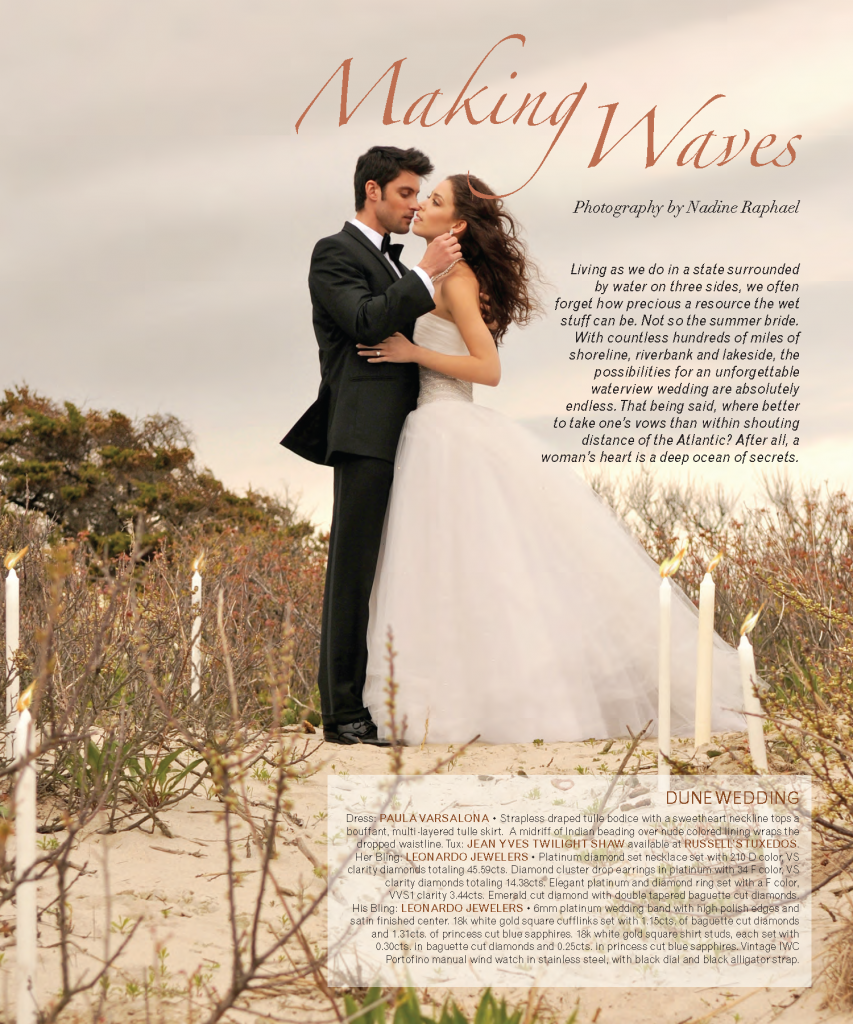
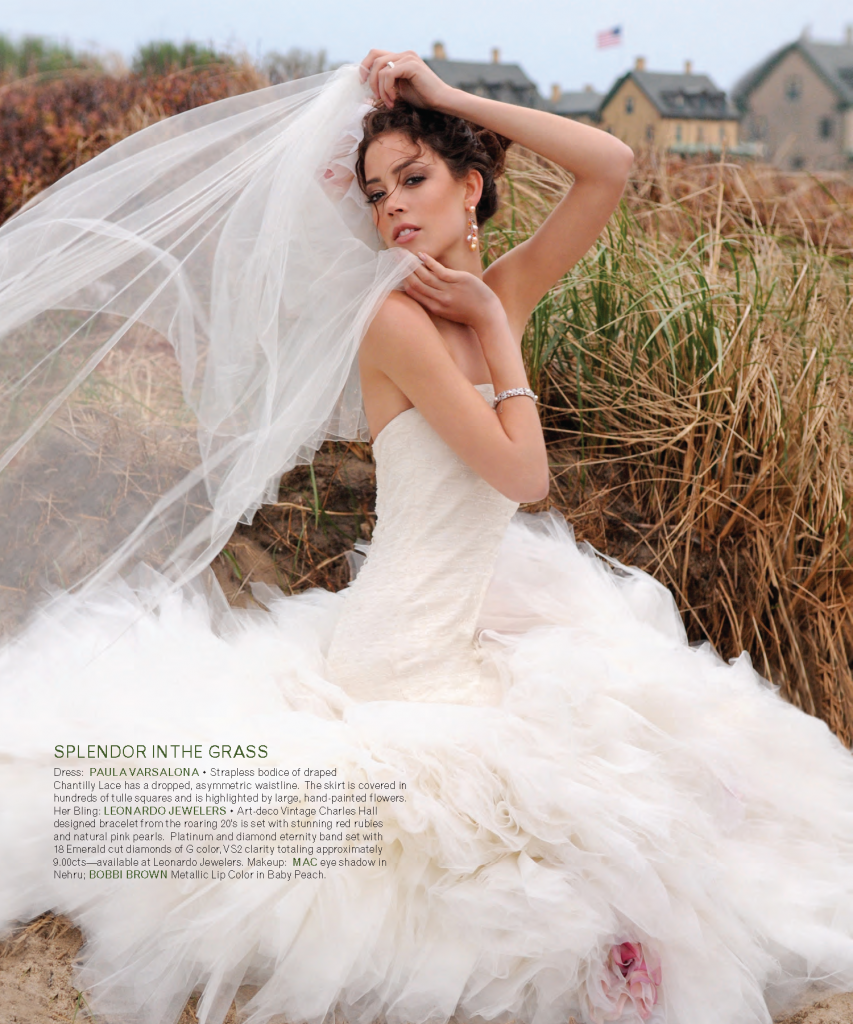

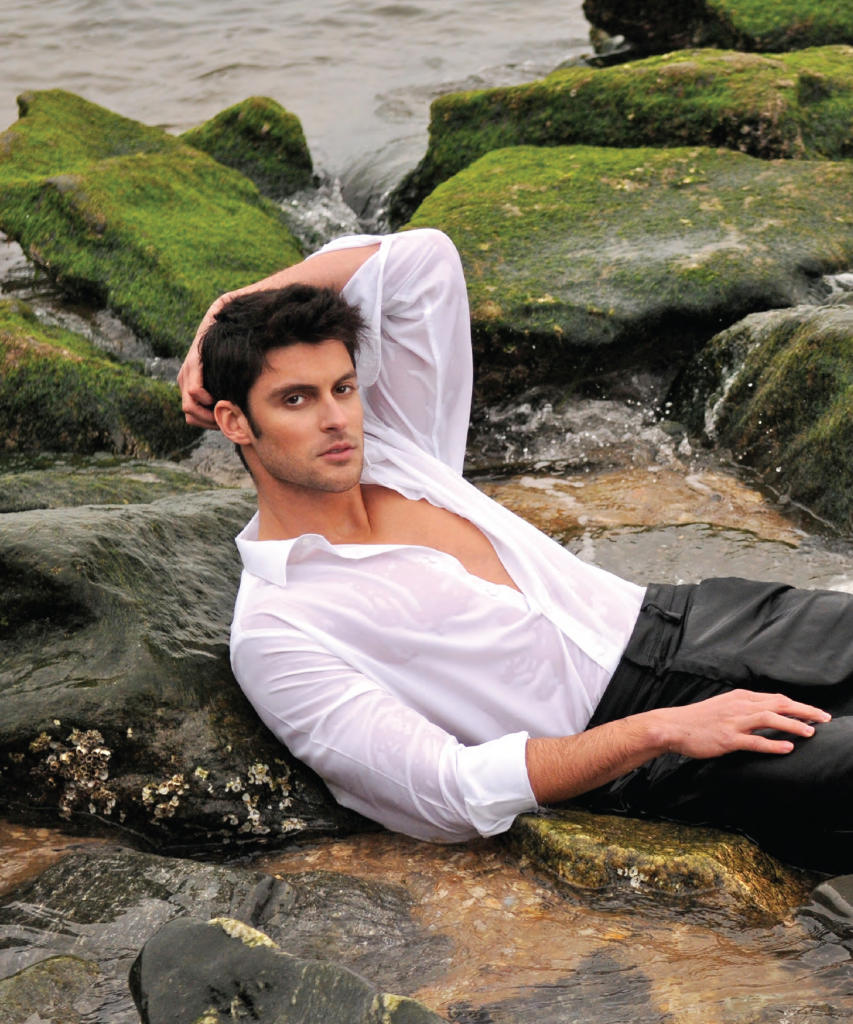
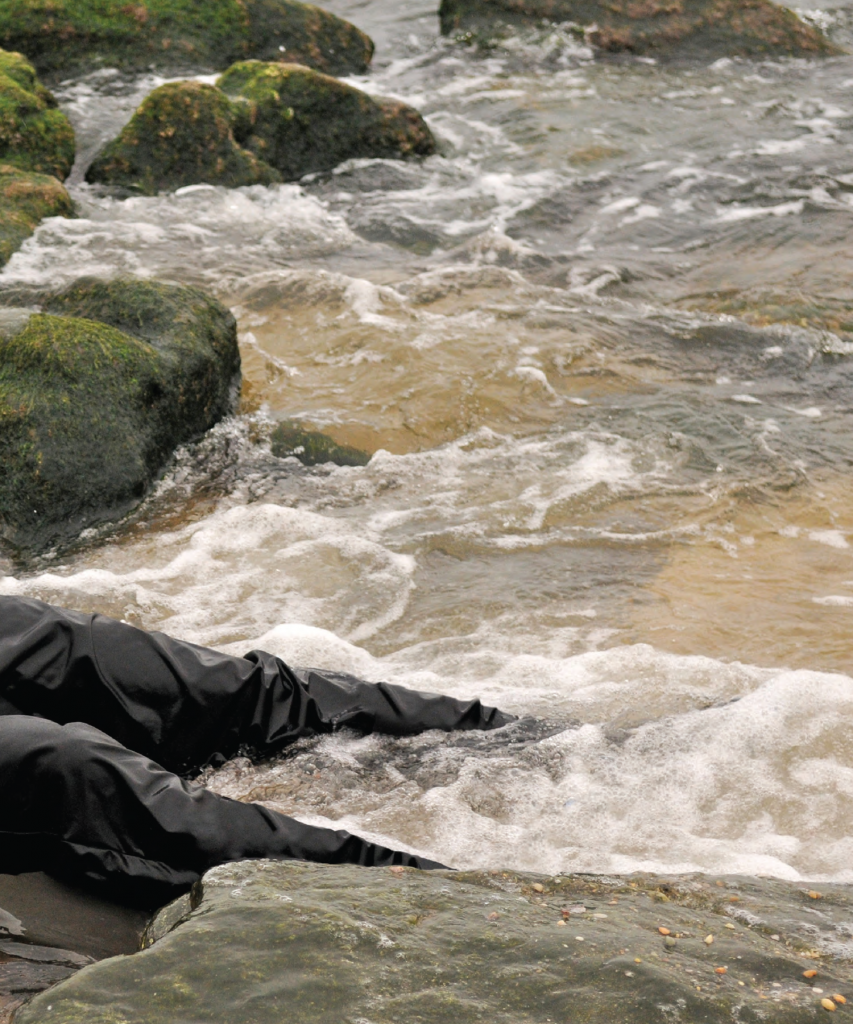
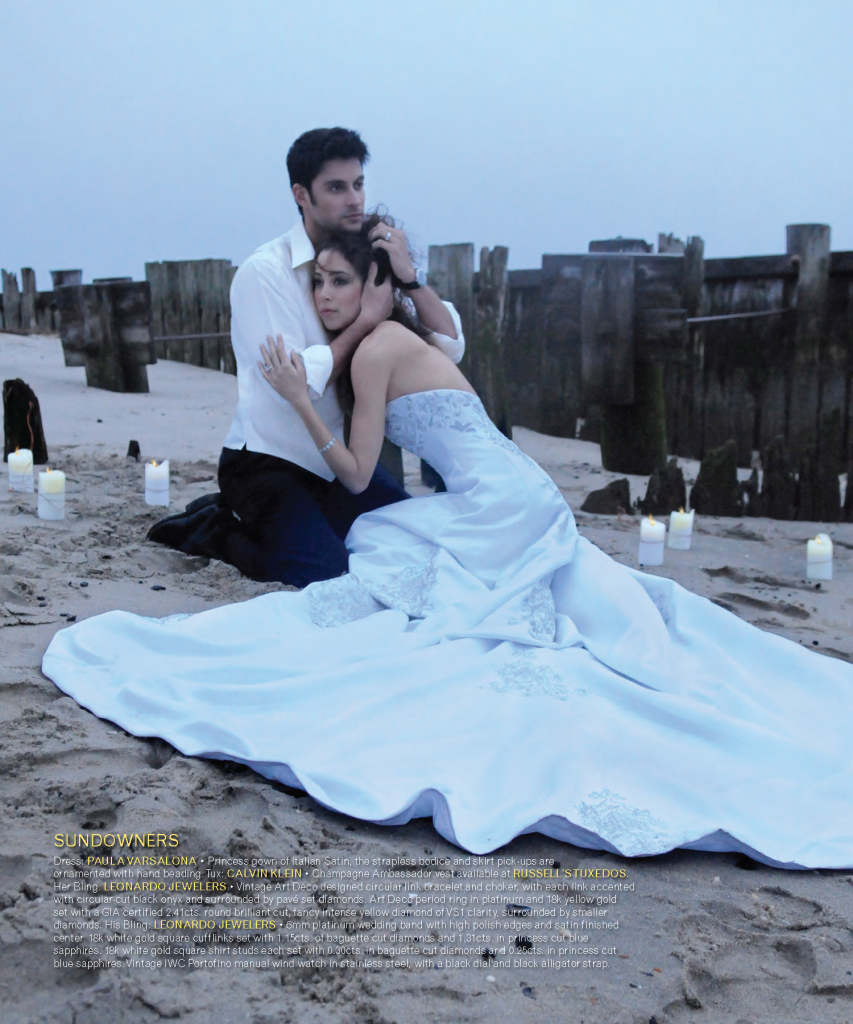
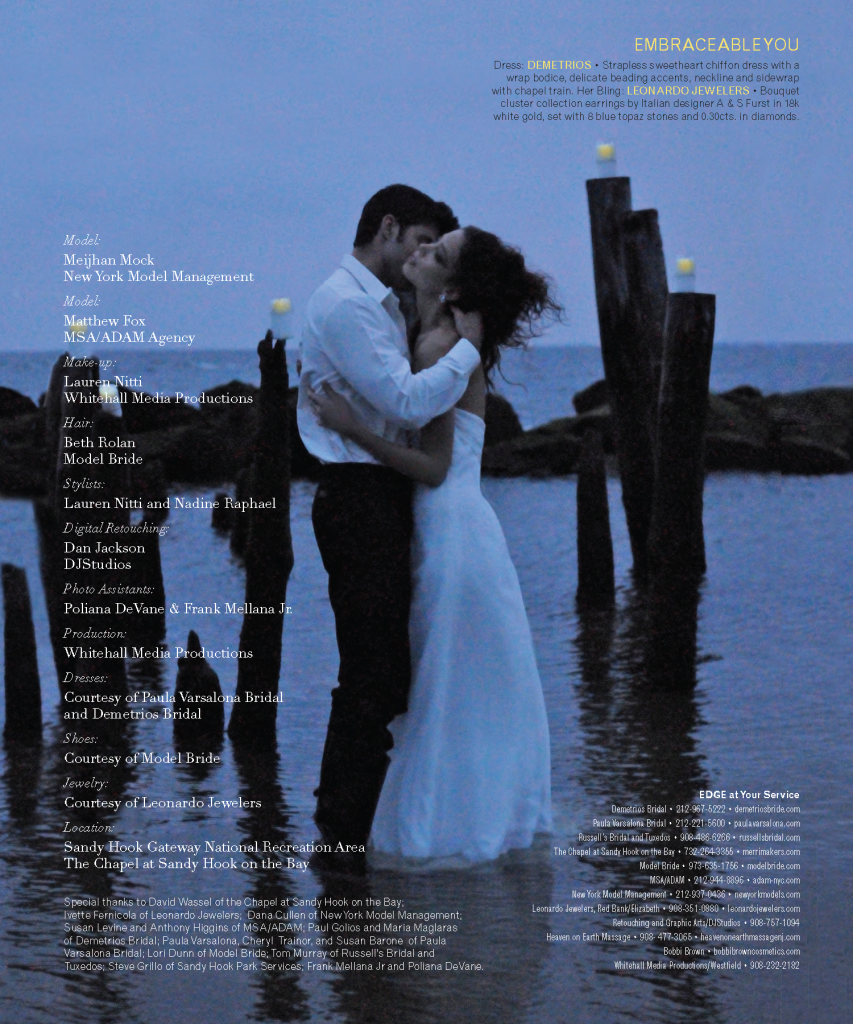
A Dozen Dazzling Places to Say ‘I Do’
Toss out your bridal magazines. Delete those online wedding bookmarks. Tell your party planner to take a walk. This is New Jersey! If you’re in the market for an unforgettable wedding, you’re already in the right place. You just have to know where to go. I’m not talking Weird New Jersey here. On the contrary, every venue on this list lends itself wonderfully to traditional ceremonies and receptions. That being said, if you are looking for something simple, special, lo-tech or alternative, you can also count on these places to shine under virtually any circumstances. Finally, don’t fret if you’ve never heard of these nuptial hot spots. Each, in its own way, is one of the state’s best-kept wedding secrets.
The Great Outdoors
These wedding venues take advantage
of New Jersey’s awesome natural beauty.

ANIMAL MAGNETISM
Back-to-nature types love the Mountain Lake House, which offers the ultimate in seclusion and privacy just a few minutes from ritzy Nassau Street in Princeton. Don’t be surprised if Bambi and Thumper join the festivities. Wedding parties are the interlopers on this 90-acre nature preserve; the furry full-time residents merely tolerate their presence.
TAYLOR MADE
Spring and Autumn wedding dates fill up fast at the Taylor-Butler House in historic Middletown. The breathtaking Victorian-Italianate structure sits on five wooded acres and has been lovingly restored to offer eight ornate rooms in which to hold your service and reception.

FARM TEAM
When you’re talking “blast from the past,” there may be no better wedding site in the state than the 1761 Brearly House, which sits in a meadow at the end of a winding, unpaved road in Lawrenceville. The hinges hadn’t even started squeaking on this lovely Georgian brick home when the colonials started taking potshots at the redcoats. Of course, those musket balls wouldn’t have been coming from Brearly. It was a Quaker farmhouse during the Revolution.
TAKE IT TO THE BANK
Before the Cooper River joins the Delaware, it ambles past
the Camden County Boathouse in Pennsauken. It serves as the launching point for some of the state’s finest crew teams. Add them to the people pulling for couples as they recite their vows on the balcony overlooking the river and the natural beauty beyond. It’s like getting married in a Monet painting.
HIGH WATER MARK
No other spot in New Jersey combines sea and sky like the Water Witch Club in Monmouth Hills (above). It offers a sweeping view of the Atlantic Ocean, New York City and Sandy Hook Bay, and is the highest place on the Eastern Seaboard where couples can tie the knot. Nestled in a neighborhood recently placed on the National Register of Historic Places, the Water Witch Club Casino has been in continuous use as a gathering place for performances and celebrations longer than any other in the state.
ANCHORS AWEIGH
For pure firepower, nothing can compete with the battleship New Jersey in Camden. Launched in 1942 and converted to a museum and memorial in 2001, she is the Navy’s most decorated battleship. The New Jersey (aka BB62) has her own events staff to ensure that everything’s shipshape for the nuptials.
ON THE WATERFRONT
If you prefer New York over Philly as your river view, then you’ll want to contact the folks who run the boathouse at Hoboken’s Shipyard Marina. An emerald lawn stretches right to the water’s edge, where guests can arrive by limo, ferry or—for that cousin who still owes you money—PATH train.
Classic Charm
These wedding spots feed the need for timeless tradition
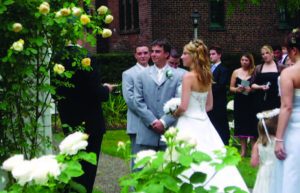
FLOWER POWER
Anyone getting hitched at Liberty Hall in Union (right) will tell you that a rose garden by any other name would not smell
as sweet. There’s just something about an outdoor wedding at this historic site—with its 23 manicured acres and breathtaking architecture—that truly transcends the mere traditional.
HOME JAMES
Catering halls may be off your radar if you’re looking for something beyond the ordinary. However, don’t be too quick
to eschew the James Ward Mansion in Westfield. While it offers the bells and whistles you’d expect from a traditional
wedding spot, it outdoes itself (and the competition) in terms of Old World elegance and sophistication. No smoked-glass
chandeliers here.
THANK HEAVEN
For most soon-to-be-marrieds, it’s an article of faith that the cost and commitment involved in the staging of a glorious
“church wedding” will come in on the steep side. Not so at the Kirkpatrick Chapel in New Brunswick (right). From the
towering candelabras to the chest-rattling pipe-organ music, it’s everything you dream of—only without the religious trappings or the big price tag.
Artful Dodges
A great way to avoid the obvious is to embrace
the creative side of the wedding equation

NIGHT AT THE MUSEUM
Looking to class up the in-laws on the big day? Look no further than the Newark Museum, which offers three different venues boasting priceless paintings and sculpture. You deliver the guests and the elegant Engelhard Court, the plush Ballantine House and the beautiful Alice Ransom Dreyfuss Memorial Garden supply the cultured surroundings.
WORK OF ART
Bringing form to your function is a specialty of the Grounds for Sculpture, located at the Seward Johnson Center for the
Arts in Hamilton. A favorite spot for exchanging vows is the Nine Muses by Carlos Dorrien, but with so much to serve as
an artistic backdrop, brides and grooms are encouraged to get creative. EDGE

